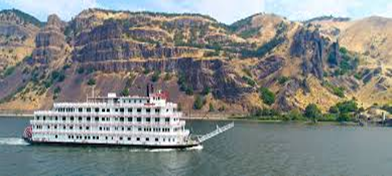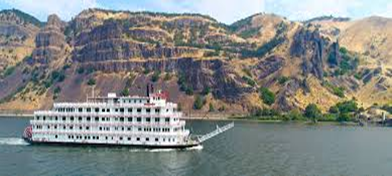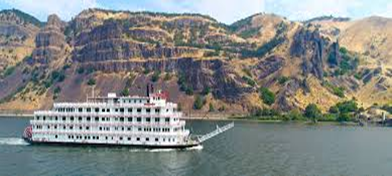scalise12
Members-
Posts
1,850 -
Joined
-
Last visited
-
Days Won
14
Content Type
Profiles
Forums
Cruise Ship Industry News
Cruise Reviews
Photos
Blogs
Everything posted by scalise12
-
Can Do, take pictures and mention the trip...?
-
What would do after receiving this phone bill???
scalise12 replied to scalise12's topic in Let's Talk Cruise!
Agree, but it's still the Parent's responsibility, what the children are up to, Still Phone goes away till 18!!! -
What would do after receiving this phone bill???
scalise12 replied to scalise12's topic in Let's Talk Cruise!
Parents should watch their children more, To a degree the Parents are to blame just as much as the child.. But still NO PHONE TILL 18!!!!??? -
Cruisers Hit With $14,000 Cell Phone Bill Published 10 hours ago on June 15, 2018 By Richard Simms Total: 850 831 4 1 0 0 14 Subscribe to Cruise Radio News by Email A German family came home from their cruise to a $14,000 bill thanks to the videos their son had watched on his phone. According to published reports, while the 12-year-old had only used half a gigabyte of data, the charges quickly added up because he was connected to the ship’s phone network, which connected to the internet via satellite. How It Happened Part of the problem had to do with the fact that the ship was at sea. While the European Union did away with most roaming charges last year, the ban does not apply to the seas. With German phone companies charging around $30 per megabyte for data downloaded through a satellite, the 470 megabytes used by the young man as he watched movies led to the $14,000 bill. The phone company, acknowledging that the pre-teen had clearly connected to the system by accident, has agreed to lower the bill… but the family is still being charged nearly $6,000. Not surprisingly, the family is seeking legal advice in the hope of reducing that bill — which they deemed “immoral” — even further or eliminating it entirely. Don’t Let This Happen To You Unfortunately, people all too often wind up making very costly mistakes when it comes to using their cell phones while on a cruise. (On the plus side, this tends to be the kind of mistake people tend to make only once. Getting that unexpected bill definitely convinces people to do their due diligence in order to prevent it happening again.) Read more: 5 Tips for Cell Phones at Sea Sponsored Link So how can you avoid coming home to a big bill? It’s actually pretty easy… if you make sure to follow a few simple steps. The most important thing to do is also probably the most obvious: Get in touch with your cell phone’s service provider. Let them know exactly where you’re going and find out what is — and isn’t — covered by your plan. Do a little research about the ports you’ll be visiting to find out if there are places near where the ship will be docked offering free wifi. You’ll easily find this information on message boards and the like by doing a simple Google search. Generally speaking, if you have an iMessage or Skype app you can talk to people back home without tapping into your cell phone data. All you have to do is buy a plan from the internet café aboard the cruise ship and you’ll be able to chat. If you buy an internet plan through the ship, make sure to carefully read the instructions. Also, if it is not an unlimited plan, be sure to sign out of the device in question at the end of each session to avoid burning through all the available data in one session. If you have any questions about how to hook up to the shipboard wifi, ask. Every ship has some form of internet cafe/desk with a staffer whose whole job is to answer exactly these types of questions. Be sure to check the daily program (or contact guest services) to find out what hours the wifi desk is open.
-
Thank You, We did the American Queen a couple of years ago, we love it so much, we are going on the Empress Queen on Columbia River, That should be fun!!
-
Just on of many Riverboat Cruises to choose from!!!
-
We sent this to out travel agent @ AAA & Princess, they replied - Had No Idea, Thanks for sending the article... Cool!!
-
Transatlantics: Your take on these lengthy cruises.
scalise12 replied to zebra's topic in Let's Talk Cruise!
Just got to book and go, you are more than Welcome with Cruise Caries, OK! -
GOOD ARTICLE TO READ... Some in Maine fear cruise-ship tourism has gone overboard Bar Harbor, where passenger traffic has risen 257% since 2003, epitomizes the quandary facing coastal communities: How to weigh economic benefits against a fragile quality of life. BY COLIN WOODARDSTAFF WRITER Share The Adventure of the Seas provides the backdrop for a couple snapping a self-portrait last week in Agamont Park along Bar Harbor's waterfront. The town expects 230,000 cruise ship passengers to visit this year and residents are struggling with how to accommodate that crush of people and the corresponding traffic snarls caused by tour buses. Residents will vote Tuesday on the purchase of a state-owned ferry terminal north of town. Staff photos by Gregory Rec First of three parts BAR HARBOR — Twenty years ago, Valerie Peacock was assistant harbormaster here and the arrival of a cruise ship was a novel event. A great passenger liner would drop anchor, and locals hanging around the town pier – adults reading the paper, kids with bicycles, teens jigging for pollock – would stop and gawk at the spectacle. “It was kind of exciting, and people would come in to town just to see them,” says Peacock, now an education consultant. “People were coming to town in a different way, and the ships were exciting, and we as harbormasters had to work out how to get the tenders into the town pier and how to get the people on and off them. “The town never stopped to think if they wanted the cruise ship or not,” she adds. “It just happened.” Valerie Peacock was assistant harbormaster in Bar Harbor 20 years ago, when visiting cruise ships were still a novelty. Two decades later, the novelty is gone. Bar Harbor expects 230,000 cruise ship passengers to march ashore on West Street this year, a 257 percent increase from 2003, snarling traffic with tour buses and overwhelming sidewalks for blocks around on busy fall days. From the top of Cadillac Mountain, the biggest ships – 17 stories tall, with 6,400 passengers and crew – will dwarf the Porcupine Islands and add plumes of exhaust to Acadia National Park’s most famous vista. But while merchants celebrate from the tide of passengers, which crests southward through town like clockwork before receding back onto the tenders and out to sea, four neighboring towns have imposed moratoriums on cruise ships in an effort to keep the flood off their doorsteps. Cruise tourism on the island has reached a tipping point. “We’ve never been and don’t want to be a town like Bar Harbor that very much caters to the day-tripper crowd. We’re a town that has people who want to come and spend several days in a real Maine town,” says Lydia Goetze, who chaired the Southwest Harbor selectboard in 2016, when it passed the state’s second such moratorium. “It was really not clear to us that there was an economic benefit to this town, and people were concerned about the quality of life.” The future course of cruise ships on Mount Desert Island awaits a ballot question Tuesday, when Bar Harbor residents will decide whether to purchase an abandoned, state-owned ferry terminal just north of town for use as a public marina, park and, most probably, an alternate landing for cruise ship tenders. If they reject the $3.5 million purchase, the Department of Transportation will put the property on the open market, and some fear that could result in the construction of a quarter-mile-long pier where cruise ships could tie up, instead of anchoring in the harbor and ferrying passengers ashore. Seen through trees from the summit of Cadillac Mountain in Acadia National Park, the cruise ship Adventure of the Seas sits off Bar Harbor last week. Staff photo by Gregory Rec Maine’s state government and coastal communities have been working hard to lure cruise ships to the state in an effort to grow and diversify the vital tourism sector. Until recently, little attention has been paid to the critical questions other communities around the world have faced: Are cruise ship crowds trampling the fabric of our towns? What are the real costs and benefits? Is it all worth it? “I’ve been sailing all over the world, and everywhere I go where cruise ships are landing it’s been just a disaster,” says Cabot Lyman, owner of Thomaston’s Lyman-Morse Boatbuidling and 250 Main, a boutique hotel in downtown Rockland. “It takes a little while, but all of a sudden people wake up and realize they spent a lot and got nothing in return. I don’t see why here would be any different.” Maine ports of call are now grappling with how to best take advantage of this expanding tourism sector – which has helped keep seasonal businesses open longer and has exposed millions of first-time visitors to the charms of the Maine coast – without overwhelming their communities to the point where their charm is lost. Their experiences are as varied as the coast itself, from teeming Portland, where business owners and city officials see ample room for growth, to Southwest Harbor, which has passed a moratorium forbidding cruise lines from landing passengers anywhere in town. A four-month examination by the Portland Press Herald/Maine Sunday Telegram has revealed a range of challenges facing Maine’s cruise ship ports as they interact with the fast-growing $38 billion industry, which is under intense pressure to capture as much passenger spending revenue as possible in order to maintain profitability, even as it is criticized for overwhelming historic, cultural and touristic assets in destination communities. Estimates of the economic benefit of cruise passenger visits in Maine have been exaggerated – especially for Portland – while many of our municipalities have failed to think strategically about how to minimize the costs and maximize the benefits of cruise tourism. In addition, the state has the weakest protections against ship discharges in New England, potentially undermining the health of coastal marine environments. RELATED ‘No discharge zone’ fight comes to Acadia region “Cruise tours aren’t necessarily an enemy, but there needs to be a more even playing field with the communities they visit,” says historic preservation scholar Erica Avrami, former director of research and education director at the World Monuments Fund. “Communities need to work together to make sure their economic, environmental, social, and cultural interests are protected.” GLOBAL INDUSTRY WITH MAINE ROOTS Ironically, the global cruise industry can trace its corporate roots to Maine and the Eastern Steamship Company, an empire founded by Charles Wyman Morse of Bath in 1911 that provided passenger service between Boston and many harbors in Maine and the Maritimes. But by 1954 commercial airlines began to displace oceanic travel, and Eastern had learned it was losing its final route between Boston and Yarmouth, Nova Scotia, because Canada had decided to run its own subsidized ferry service with a new vessel called the Bluenose. Enter Frank Leslie Fraser, the pioneer of the U.S. cruise industry, who bought the distressed company and transferred its aging twin 450-passenger ships, Evangeline and Yarmouth, to the sleepy port of Miami to run leisure cruises to the Caribbean and Central America. Flagged out of Panama to avoid U.S. taxes and regulations, the ships were refitted with air conditioning and tiny swimming pools, and catered to middle-income customers looking for a quiet, stress-free break in the tropics. The model worked, and Eastern expanded, attracted rivals, was bought and sold, and was eventually folded into Royal Caribbean. The global industry has grown phenomenally in recent decades, from 500,000 passengers in 1970 to 7.2 million in 2000 and more than 28 million today, and its current 8 percent annual growth rate is triple that of the tourism industry as a whole. More than half of all cruise passengers begin their trips in the United States, where the “big three” companies – Carnival Corporation, Royal Caribbean International and Norwegian Cruise Lines – are headquartered, though incorporated in Panama, Liberia and Bermuda respectively for tax and regulatory reasons. Carnival alone has more than 100 ships operating under 10 brands including Cunard, Holland America and Princess. Ships have been getting bigger as well. The Pacific Princess, the ship that popularized cruise travel as the star of the 1970s TV series “The Love Boat,” was 550 feet long, carried 620 passengers and displaced 20,000 tons. Royal Caribbean’s Anthem of the Seas – which calls on Portland this fall – is 1,200 feet long, carries more than 4,900 passengers and displaces nearly 170,000 tons. It is in turn dwarfed by the new Symphony of the Seas, which carries nearly 7,000 passengers and displaces 228,000 tons, and features two surfing pools, an eight-story water slide, a tree-lined open-air “central park” with 20,000 tropical plants and an indoor shopping mall. CONTENDING WITH OVERCROWDING For ports of call, one implication of the growth of the industry and its ships has been that a lot more passengers are coming ashore, and more of them all at once. In popular destinations – places like Venice, Italy; Dubrovnik, Croatia; and Charleston, South Carolina – peak-season cruise-ship crowds are feared to have diminished the towns’ attractions and reputations, repelling higher-spending land-based tourists. Preservation, conservation and neighborhood groups in Charleston sued Carnival, arguing cruises were a public nuisance – on account of noise, pollution and traffic – but the state Supreme Court dismissed the case on a technicality in 2014. Venice – a city of 50,000 that sees 30,000 cruise passengers a day in peak season – in November banned large ships from the city center after UNESCO warned that the city, a World Heritage Site, was endangered by them. Bar Harbor residents will decide Tuesday whether to approve a bond to buy this state-owned ferry terminal for use as a public marina, park and possibly an alternate landing for cruise ship tenders. Staff photo by Gregory Rec The gates, streets and narrow alleys of the walled city of Dubrovnik – where the King’s Landing segments of the television show “Game of Thrones” are filmed – become impassable on cruise ship days. “Cruise ships are very welcomed out of season, but in peak season days it’s so overcrowded people can’t move down the city’s main street,” says researcher Zrinka Marusic of the Croatian Institute of Tourism in Zagreb. Avrami, the historic preservation researcher, says the sudden, short flood of cruise ship visitors can cause lasting damage to a community. “This can absolutely degrade the resource, literally and physically, just in terms of wear and tear to these sites,” she says. “It can fundamentally change the community, the heritage experience, and the daily experience of the people who live there.” The Cruise Lines International Association, which represents most cruise lines, declined interview requests for this series, but in a response to written questions it said it is partnering with local governments, travel businesses and others to address crowding issues. “With growth comes responsibility,” its statement said. “The travel and tourism industry must work together to find solutions that ensure the destinations we visit are strengthened and preserved.” PORTS’ SHARE UNDER PRESSURE The growth in ship size has also reduced ticket prices, giving cruise lines a strong incentive to capture as much of their passengers’ spending as possible, according to Ross Klein, a social scientist at Memorial University of Newfoundland who studies cruise impacts. “For the industry, the more money that’s spent ashore, the less money will be spent on board,” Klein says. “They want there to be so much to do on their ships that passengers won’t want to get off at port.” Digging into Carnival and Royal Caribbean’s financial statements, Michael Vogel of Germany’s Bremerhaven University Institute for Maritime Tourism discovered that between 2001 and 2014 the lines faced declining revenue per passenger cruise day, the result of having to reduce ticket prices to keep ships full. Indeed the tickets – which include on-board food and entertainment – no longer cover the lines’ costs, Vogel found, which has made them dependent on on-board purchases for profitability, giving them an incentive to sell more merchandise, drinks, premium meals and highly marked-up shore excursion packages from them. “On top of that, large cruise lines try to get their hands on their passengers’ spending also ashore, either by owning/controlling shops and restaurants in key locations … or by signing contracts with local shops resulting in significant kickback payments to the cruise lines in return for ‘shopping recommendations’ to passengers,” Vogel explained via e-mail. “Either way, the destinations’ share of wallet of the cruise passengers decreases.” (It’s not known whether some Maine businesses pay fees to be promoted, as the transactions are private, and cruise lines don’t appear to own retail businesses ashore here.) Norwegian Cruise Lines took things a step further in 2016 by opening a private port on its own 78-acre island off Belize, where passengers rent air-conditioned beach villas and poolside lounge chairs and buy adventure excursions or meals at five restaurants and bars. Royal Caribbean leases its own destination islands in the Bahamas and Haiti, while Carnival passengers pay to horseback ride, kayak, or snorkel at Half Moon Cay, the company’s Bahamian island. FEELING THE STRAIN Maine has seen dramatic growth, from 130,000 passengers and 142 ship visits in 2002 to more than 378,000 passengers and 410 ship calls last year. Bar Harbor has seen the lion’s share, wracking up more cruise traffic than the rest of Maine’s ports and harbors combined. Large ships also visit Portland and Rockland, while smaller, 100-to-300-passenger “expedition class” ships call on a half-dozen smaller harbors: Bath, Boothbay Harbor, Camden, Belfast, Castine and Eastport. The smaller ships – mostly U.S.-flagged vessels operated by U.S. companies – have generated few complaints, as they bring fewer passengers who typically spend more time and money ashore. The larger ones are regarded as a mixed bag. In Bar Harbor, many residents and business owners agree cruise ships have brought benefits to the town, primarily by giving seasonal business owners reason to open earlier in the spring and stay open late into the fall. “When I was growing up, it was more like other coastal towns where Labor Day is definitely the end of the season,” says Jeff Curtis, owner of the Sherman’s Maine Coast Book Shops, who grew up right over the Bar Harbor store, a few yards from the waterfront. “Now it goes on through the whole month of October.” The season now starts on whatever late April day the first cruise ship calls. But strains have been apparent all along. In 1999, when Bar Harbor welcomed just 30 liners, The Boston Globe reported “residents feel they are drowning in tourists” as a result. Last year, 148 arrived, prompting a Dec. 31 report in The New York Times headlined, “Cruise ships have made Bar Harbor popular, but have they ruined it?” Kristi Bond, co-owner of four downtown restaurants, says the ships have been good for business, though the crowds they create by the landing often scare people away from the one she has there. “A lot of them are just irritated and want to get away from the area,” she says, despite the town’s fall season cap of 5,000 passengers a day. “What we’re doing now is not going to work much longer, because it’s already bursting at the seams.” But it was the town council’s plan to build a cruise ship pier at the old ferry terminal north of town – the one the Bluenose and Cat once operated from – that catalyzed public opinion against further growth. FEARING THE PIER Only tiny ships like American Cruise Lines’ 104-passenger, 96-ton Independence can dock at Bar Harbor’s existing piers. All the larger ships anchor and contract Ocean Properties, the Florida-based hotel development company founded by Brewer native Tom Walsh, to pick up their passengers with tenders and land them at the company’s dock at its Harbourside Hotel and Marina, which encompasses much of the downtown waterfront. In 2007, town council chairman Paul Paradis recalls, the town learned The Cat would soon end its Bar Harbor-Yarmouth runs and its terminal would be on the market. “We felt, geez, that’s a public maritime facility, we’d like to keep it that way, so how can we do that?” says Paradis, owner of Paradis True Value Hardware. “We engaged a consultant who said: ‘You’re in the cruise ship business now, but you’re doing it like they did in the Dark Ages.'” A $30 million pier and cruise terminal would eventually pay for itself, consultant Bemello Ajamil advised in its 2012 report; if it was not built, the increasing size of cruise ships would likely result in “a steady decline of traffic” because tendering passengers ashore would become unmanageable. The cruise industry has long seen the lack of berthing facilities in Bar Harbor and Rockland as a major impediment to growth. Tendering, the cruise association wrote in its statement to the Maine Sunday Telegram, “makes port calls costly, puts passengers at risk of injury, lessens port days, reduces passenger spending, and increases fuel costs.” The town council itself has been sympathetic to the cruise lines’ concerns, and the council’s original plan to rectify them was to have the Maine Department of Transportation purchase the terminal property and the Maine Port Authority develop and operate a cruise terminal. But a public revolt over the growing scale of cruise tourism unfolded in 2016, spurring a lawsuit (still active) by property owners opposed to the cruise terminal; a June 2017 ballot measure to prohibit the largest cruise ships from visiting (which DOT helped defeat by threatening to sell the property on the open market if it passed); and acrimonious public meetings where residents denounced the pier plan. “It’s about scale,” says Darron Collins, president of the College of the Atlantic, whose 38-acre campus is just to the south of the terminal. “It’s a very different thing to have a 3,000-passenger ship that’s 16 stories tall anchored a half-mile out versus berthed right on the shore. It would definitely change the nature of our campus: We’d hear them, see them, smell them, and that is a concern for the institution.” In the tumult, the port authority backed out of participation, and the DOT bought the property and told the town it would need to buy it from them and develop it themselves or else it would be sold on the open market. A COMMUNITY-SOURCED SOLUTION Last fall, as tempers flared, the town council convened a 40-member citizens committee to come up with a vision for what the community wanted to see happen at the property. The committee’s conclusion: The community does not want a cruise ship megapier but rather public waterfront access, a marina, and possibly a place for tenders and tour buses to exchange cruise passengers. “It was a fantastic process, because it gave 40 citizens a chance to take a deep dive into the issue and spend countless hours reaching out to the community,” says one of its members, Natalie Springuel, a marine extension agent with the Maine Sea Grant program. Town manager Cornell Knight says the idea is to use the terminal area to relieve pressure on the downtown waterfront. “We want to look at trying to divert some tendering there and have a system to shuttle passengers around town and to the park,” he says. “If the ferry terminal can alleviate some of the congestion we have on cruise ship days, that would make it a better experience for everybody.” Ocean Properties co-owner Mark Walsh says his company, which just invested $12 million in two purpose-built tenders to ferry passengers to their downtown dock, opposes such a plan. “I don’t think that’s a good cruise ship or tendering area, and the busing and everything that would have to take place is impractical,” he says, whose firm also owns a hotel next to the old terminal. “I think it works very well right where it is now.” Others fear a developer could swoop in to build just such a terminal. “It’s imperative that we buy it or lease the property, because if it goes to the private sector, there’s a very, very strong chance we would see a cruise ship pier there,” says Joe Minutolo, the owner of the Bar Harbor Bicycle Shop, who helped lead the citizens committee. “You put that kind of investment in here, and no matter who owns it you’d need an increase in the amount of cruise ships and passengers just to service the debt.” It’s the very sort of long-range thinking small cruise ports should be undertaking, says John McCarthy, an urban planner at Heriot-Watt University in Edinburgh who has studied the experiences of towns in Maritime Canada. “Decision makers should reach out to community and business leaders early on in making these kinds of strategic decisions,” he says. “A lot of good can be done in achieving compromise and finding workable solutions if they do.” Colin Woodard can be contacted at 791-6317 or at: cwoodard@pressherald.com Correction: This story was updated at 10:30 a.m. Monday, June 11, 2018 to correct the name of the street in Bar Harbor where passengers come ashore. It is West Street.
-
Transatlantics: Your take on these lengthy cruises.
scalise12 replied to zebra's topic in Let's Talk Cruise!
We are at 80 and counting, -
Transatlantics: Your take on these lengthy cruises.
scalise12 replied to zebra's topic in Let's Talk Cruise!
Agree. We are on a Cruise this fall crossing the Pacific Ocean, 12 days at Sea, can't wait... -
Maybe, OK! But what about men who are not Bald, Or had Surgery... It's just not cool...
-
Growing up in Michigan. I always wonder what it would be like to cruise the Great Lakes... I's on our bucket list...
-
We only live once, Go For It. Life has to many (WHAT IF & SHOULD OF DONE THAT)!!!!
-
Who would be interested on Riverboat Cruising, The was found on The Huffing-ton Post. Please read and Please give feed, let's hear from all crazies!!! This is one of many Riverboat Cruise Lines Around... Top Ten Reasons to Take an American Queen Steamboat River Cruise By Regina Fraser and Pat Johnson Did you know that you could cruise for nine days on the “Mighty Mississippi,” and on a luxury paddlewheel steamboat? In 2014, I saw an ad promoting a trip up and down the Mississippi River on The American Queen Steamboat, a recreated paddle wheeler that held about 400 people. The idea grabbed me immediately because the books I’d read as a kid, written by Mark Twain, were filled with stories about the Mississippi River and the towns that fronted the river as it made its way to New Orleans. I’m all about adventure, and remembered dreaming of such a trip, hanging over the rails looking for “Huck” and “Big Jim.” So, I called the steamboat company immediately to find out how I might be able to get on one of their boats. The American Queen Steamboat Company launched two paddlewheel steamboats in 2012 — The American Queen (AQ) and The American Empress (AE). The AQ is the larger boat and cruises the Mississippi, Ohio and Tennessee Rivers. It’s really grand! The American Empress (AE), sails on the Columbia and Snake Rivers in the Pacific Northwest — fantastic scenery! Both boats are flat bottom and designed just for river travel like in the “old days.” Filled with real and replicated antiques, the atmosphere of an era gone by in American history permeates everything — décor to food. Just having completed my trip of the lower Mississippi — New Orleans, Oak Alley, St. Francisville, Natchez, Vicksburg, Baton Rouge and Nottoway Plantation — and returning to New Orleans, I had to write immediately about my trip. The entire experience was wonderful and exceeded my expectations. It was steeped in antebellum and African American history, and with quiet nights on the boat as we cruised along the banks of the Mississippi. I enjoyed opening my door on the balcony and watching the sun come up over the river. This is such a unique adventure I recommend that anyone who wants to travel without stress, and on a truly American boat on a river steeped in American history should call American Steamboat Company now! And here are my top ten reasons for you to book this cruise: 1. The AQ is the only authentic overnight paddlewheel steamboat in America. 2. Famed American chef Regina Charboneau’s menu — I ate myself silly! 3. A staff that oozes Southern charm — they greet you by name! 4. Off-boat excursions — great guides and meaningful interactions with the locals, and daily “Riverlorian” seminars on the boat. 5. Complimentary bottled water, soft drinks and complimentary wines and beer at dinner. 6. Cabins with balconies, private baths, big fluffy robes, and coffee delivered to your room every morning. 7. Decor of the ship — warm and inviting, with the ambiance of an antebellum mansion, with public rooms decorated with carefully selected antiques. 8. Front Porch Cafe — has daily fresh baked pastries and food almost 24 hours; J.M. White Dining room beautifully decorated with some of the best-trained wait staff ever! 9. The boat is quiet!! You almost forget you are moving — it’s smooth. 10. The price and relaxing atmosphere — cannot be beat. Did I convince you yet? Granny Regina missing American Queen Steamboat waiter William, and his best ever “Arnold Palmer” drinks! PHOTO GALLERY 10 Reasons to Cruise the Mighty Mississippi River on American Queen Steamboat
-
We totally agree the Jungle Queen Dinner Cruise, is a lot of fun, The BBQ was really and lot'd of Good Food. A must do in a overnight and Cruise Out The Next Day.. Pictures of the Empress Queen Columbia River...
-
Hello Cruise Crazies, Has any ever taken a River Cruise in America, on the Mississippi River, Columbia River. If so would like any feed back and share with everyone. We did a Mississippi Cruise and fell in love...
-
Hello All Cruise Crazies, Just wonder and to get fed back, Has anyone take a Great Lake Cruise???
-
Royal Caribbean successfully sued for $20 million
scalise12 replied to Jason's topic in Let's Talk Cruise!
This is ashamed passenger's don't pay attention to ship procedures, Like Muster Drills!!! Poor Girl, her hand will never be the same... God Bless Her!!!! -
Thanks for the in put Shari2, My wife been on Celebrity way back at the turn of the century, but she forgot a lot since than. for me this is my first, so I'm adding a new cruise lines to my list of some 85 cruises so far, Been on Carnival, RCL, NCL, Disney, QE2, HAL, American Queen Riverboat and Princess... Thanks for your time....
-
Yes, it is good to see the cruise industry growing with new ships, I can't wait to see the Sky Princess coming in late 2019...
-
How to get the most out of cruise ship dining
scalise12 replied to Jason's topic in Let's Talk Cruise!
All Good Points... Thanks!! -
All cruise lines has policy on dining etiquette in place for dining, and the policy does has a section what not to wear during dining time, and yes proper attire is strongly suggestive...
-
This question is almost is why. What do you think about someone, wearing a Baseball Cap while eating dinner in the dining room, or any type of a Hat. Wonder where is their manners went!!! We have asked many times in a nice way if they can remove the Hat and if they say NO.. Than we ask the Head Waiter if we can be moved, How do you fell about this subject?????
-
So, Who Still Dresses Up for Formal Night?
scalise12 replied to Jan115's topic in Let's Talk Cruise!
Not, US! We are on a Vacation to relax and enjoy the salt air...







